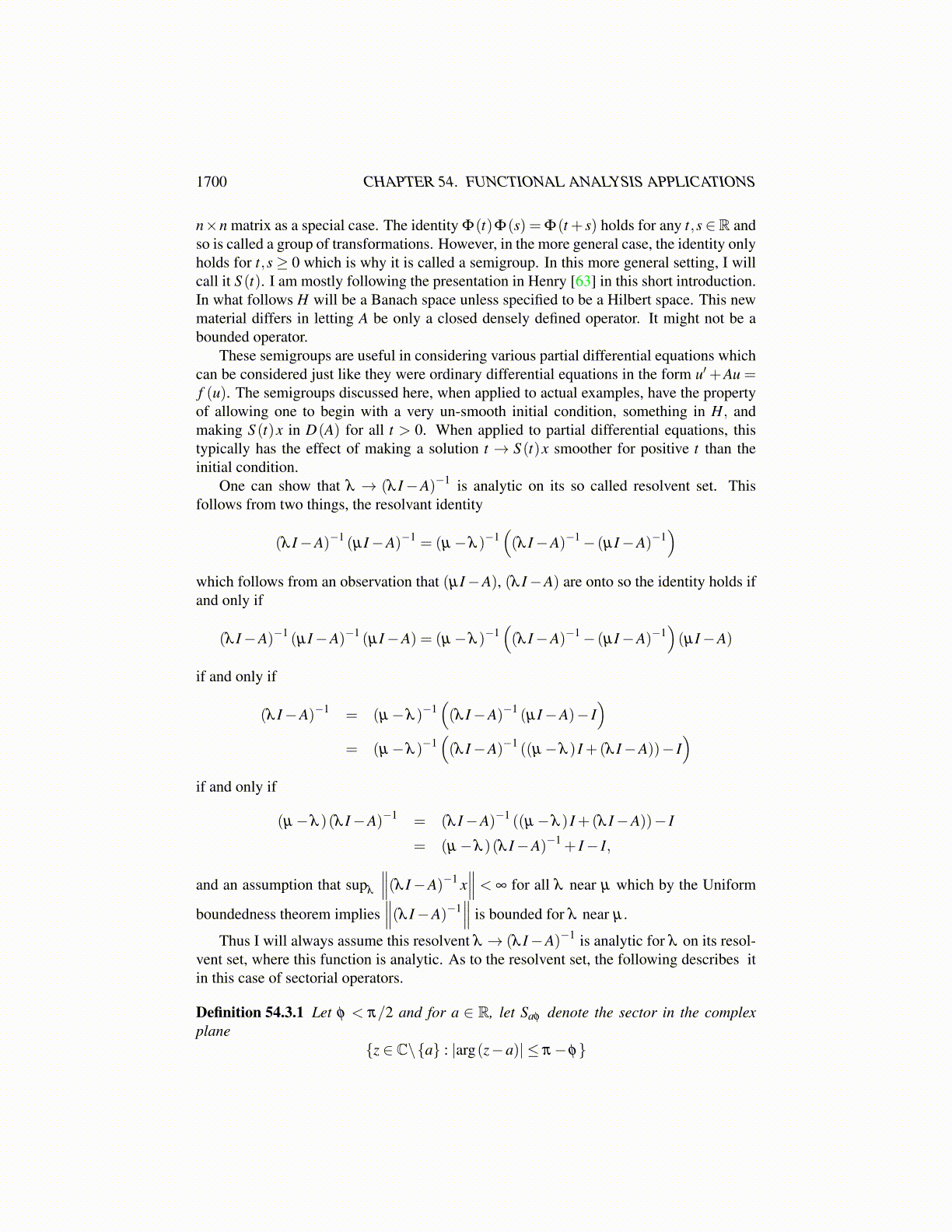
1700 CHAPTER 54. FUNCTIONAL ANALYSIS APPLICATIONS
as n→ ∞ because the convergence of the series requires the nth term to converge to 0.Therefore,
(λ I−A)B = B(λ I−A) = I
which shows λ I−A is both one to one and onto and the Neumann series converges to(λ I−A)−1 . This proves the lemma.
This lemma also shows that σ (A) is bounded. In fact, σ (A) is closed.
Lemma 54.1.3 r (A) is open. In fact, if λ ∈ r (A) and |µ−λ | <∣∣∣∣∣∣(λ I−A)−1
∣∣∣∣∣∣−1, then
µ ∈ r (A).
Proof: First note
(µI−A) =(
I− (λ −µ)(λ I−A)−1)(λ I−A) (54.1.1)
= (λ I−A)(
I− (λ −µ)(λ I−A)−1)
(54.1.2)
Also from the assumption about |λ −µ| ,∣∣∣∣∣∣(λ −µ)(λ I−A)−1∣∣∣∣∣∣≤ |λ −µ|
∣∣∣∣∣∣(λ I−A)−1∣∣∣∣∣∣< 1
and so by the root test,∞
∑k=0
((λ −µ)(λ I−A)−1
)k
converges to an element of L (X ,X) . As in Lemma 54.1.2,
∞
∑k=0
((λ −µ)(λ I−A)−1
)k=(
I− (λ −µ)(λ I−A)−1)−1
.
Therefore, from 54.1.1,
(µI−A)−1 = (λ I−A)−1(
I− (λ −µ)(λ I−A)−1)−1
.
This proves the lemma.
Corollary 54.1.4 σ (A) is a compact set.
Proof: Lemma 54.1.2 shows σ (A) is bounded and Lemma 54.1.3 shows it is closed.
Definition 54.1.5 The spectral radius, denoted by ρ (A) is defined by
ρ (A)≡max{|λ | : λ ∈ σ (A)} .
Since σ (A) is compact, this maximum exists. Note from Lemma 54.1.2, ρ (A)≤ ||A||.
There is a simple formula for the spectral radius.